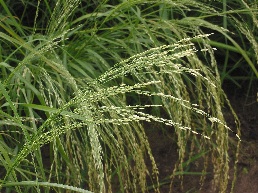Sequencing of the genomes of agriculturally important grasses such as maize (Zea mays) and sorghum (Sorghum bicolor) has allowed us to gain important insights into the evolution and abiotic stress response of these plants.

In recent years there has been an increased focus on applying these advances to more localized crops, which often constitute an important nutritional resource in low-income countries. In Ethiopia Eragrostis tef (Tef), a grass native to the Ethiopian and Eritrean highlands, is a staple crop and accounts for approximately a quarter of cereal production.
Tef has a number of properties that makes it attractive for farmers in Ethiopia. The crop grows well in both arid and water-logged areas and it is relatively nutritious. In addition it has the potential to become more popular internationally due to both its nutritional status and the fact it can be eaten by those suffering from gluten intolerance (including Celiac disease). In recent years there have been a number of initiatives to increase yields of this crop which remain low despite its popularity.

The publication of the Tef genome in in BMC Genomics provides new insights into the biology of this plant as well as providing a valuable resource for the community.
The international team of researchers, based in Ethiopia, Switzerland and the USA, focused their analysis on several aspects of the plant’s biology. As mentioned above Tef is an attractive crop in Ethiopia as it is relatively drought resistant. However when water supplies are limited the crop yield is reduced and so understanding Tef’s response to abiotic stress is key to improving yields. There are a number of genes in other plants, such as rice and sorghum, that are known to play a role in this abiotic stress response and full or partial copies of all of these genes were found in the Tef genome.
The presence of SAL1 was of particular interest to the researchers as down-regulated or inactivated copies of this gene have previously been shown to increase drought tolerance in Arabidopsis and wheat. In other grasses there are usually 1-2 copies of SAL1 but the Tef genome reveals seven copies or partial copies which have appeared as a result of gene duplication and represent targets for future research.

In addition analysis of the genome confirmed the absence of the epitopes involved with gluten intolerance and provides confirmation of previous work that used antibodies to analyse this.
Hopefully the data generated in this project will be useful for years to come and will enable research into the best way to improve crop yields. The Tef takeover starts here!
Philippa Harris
Latest posts by Philippa Harris (see all)
- The Tef genome: deciphering one of Ethiopia’s key crops - 14th August 2014
- Why I study malaria: Dr Francis Ndungu on research, working in Kenya and open access - 25th April 2014
- New research sheds light on the development of a rare disease - 28th February 2014
Comments